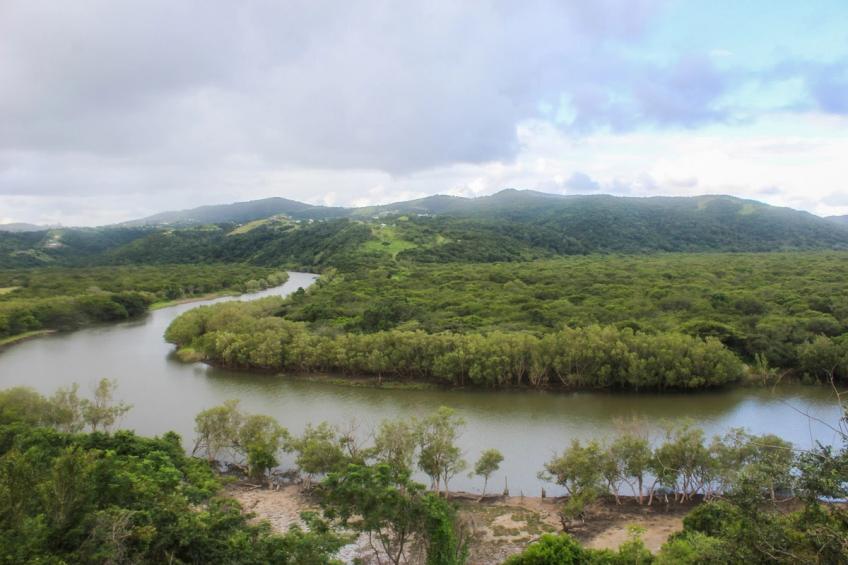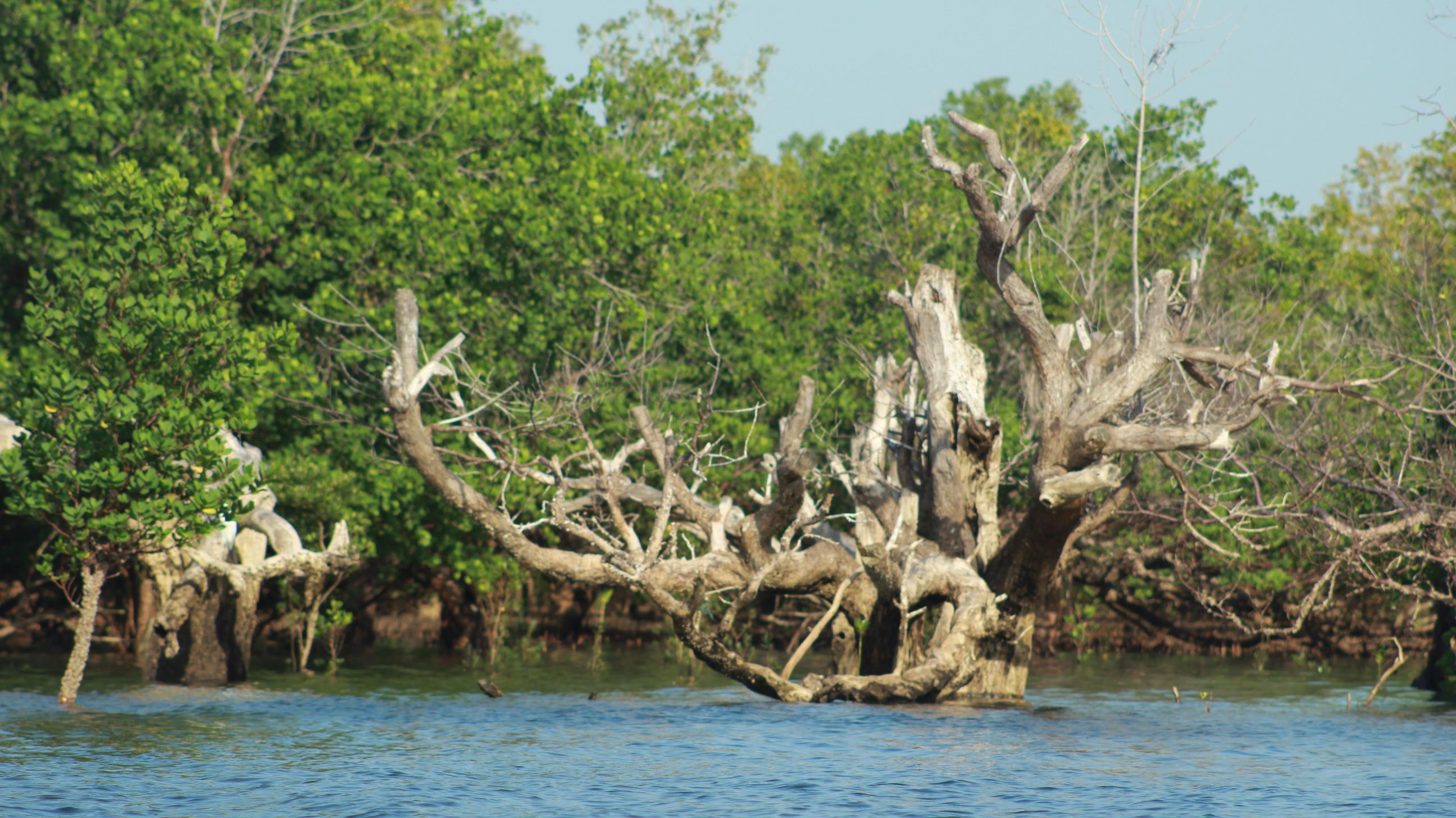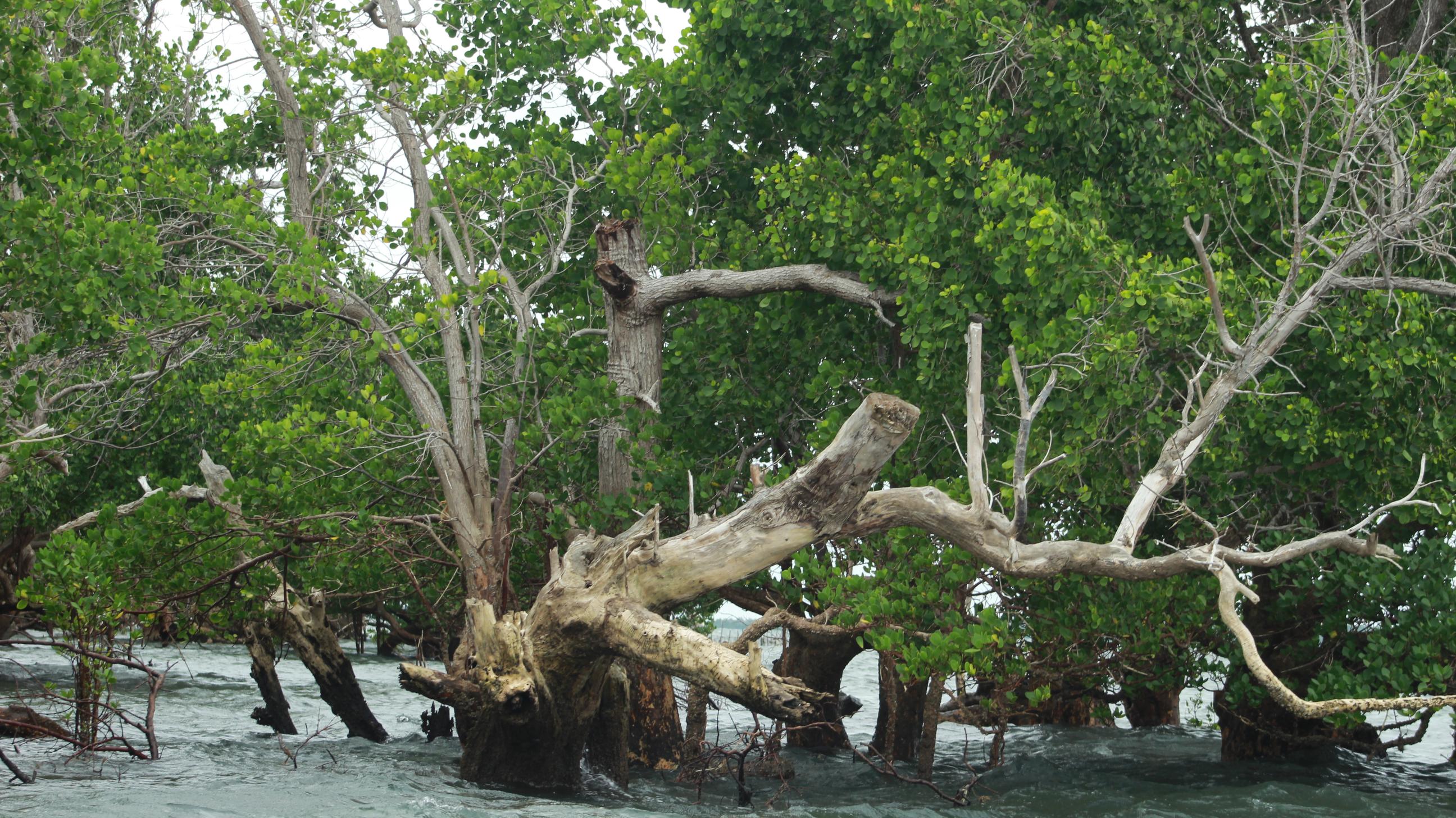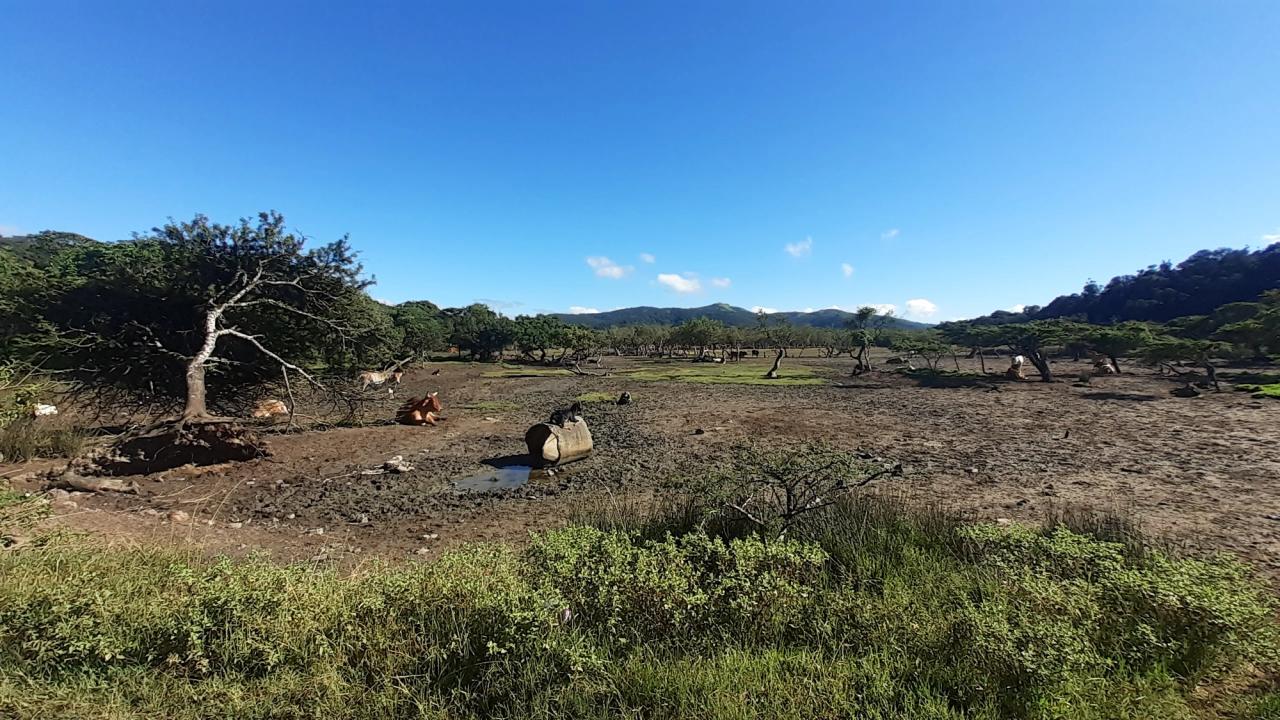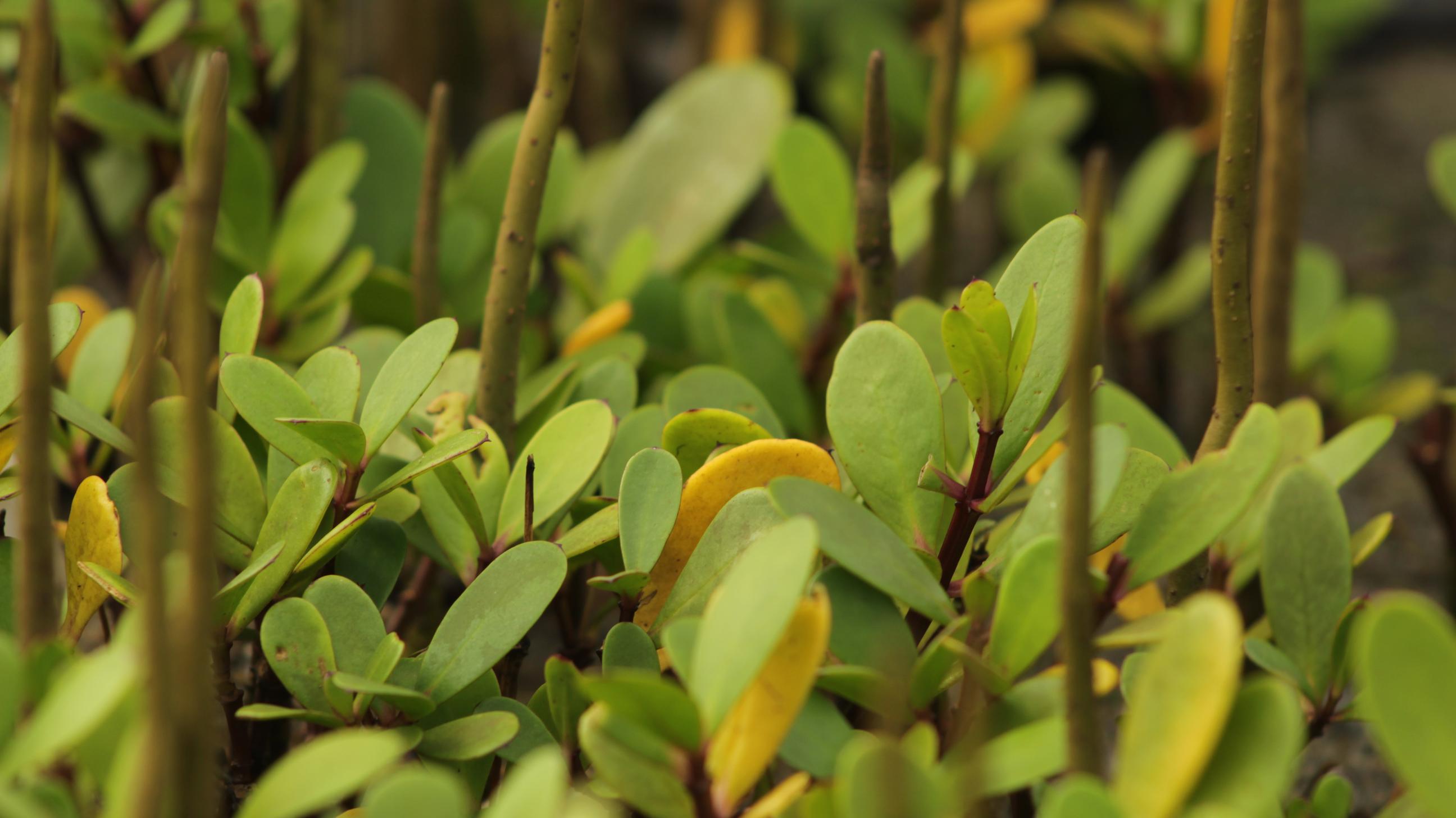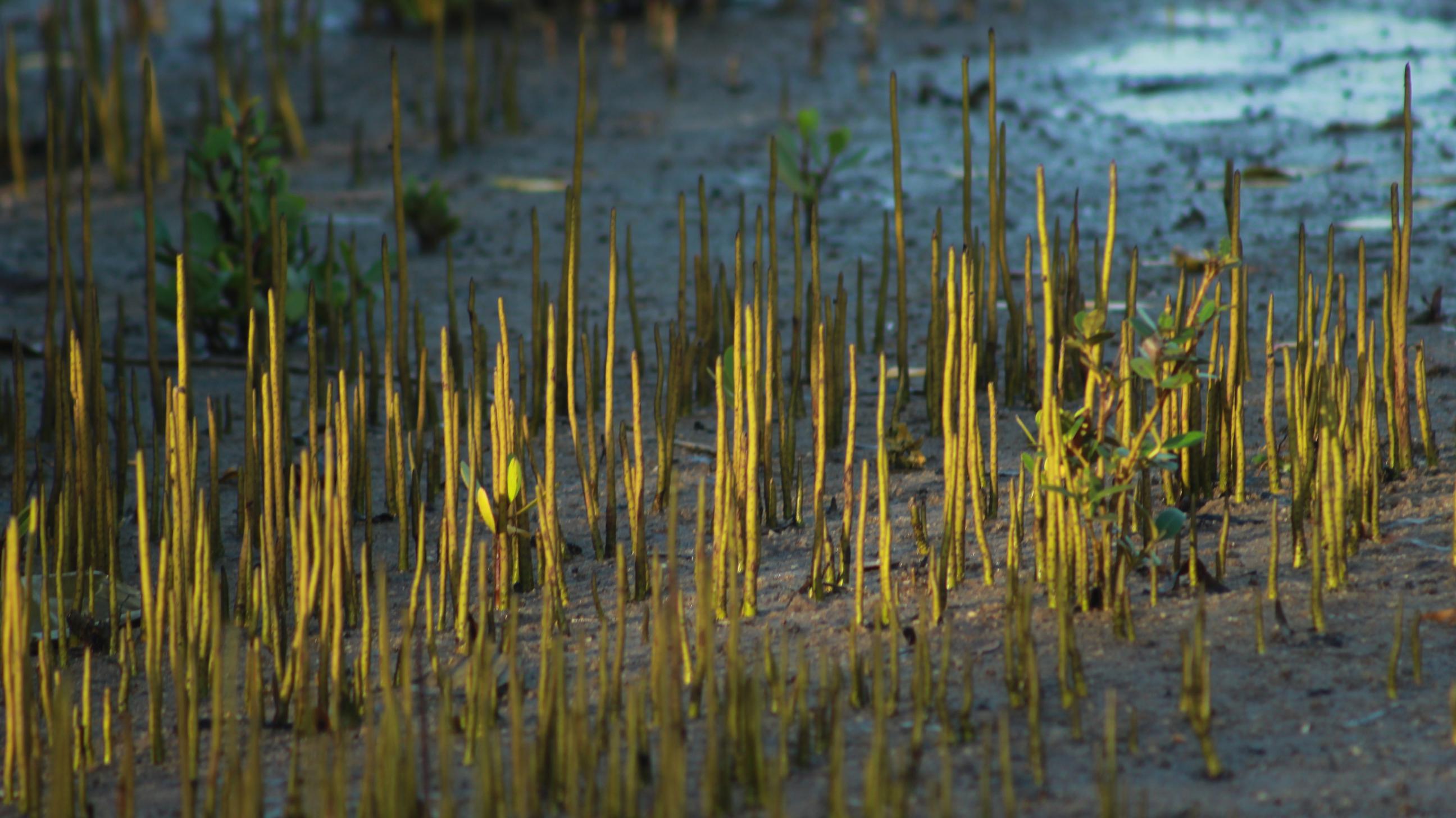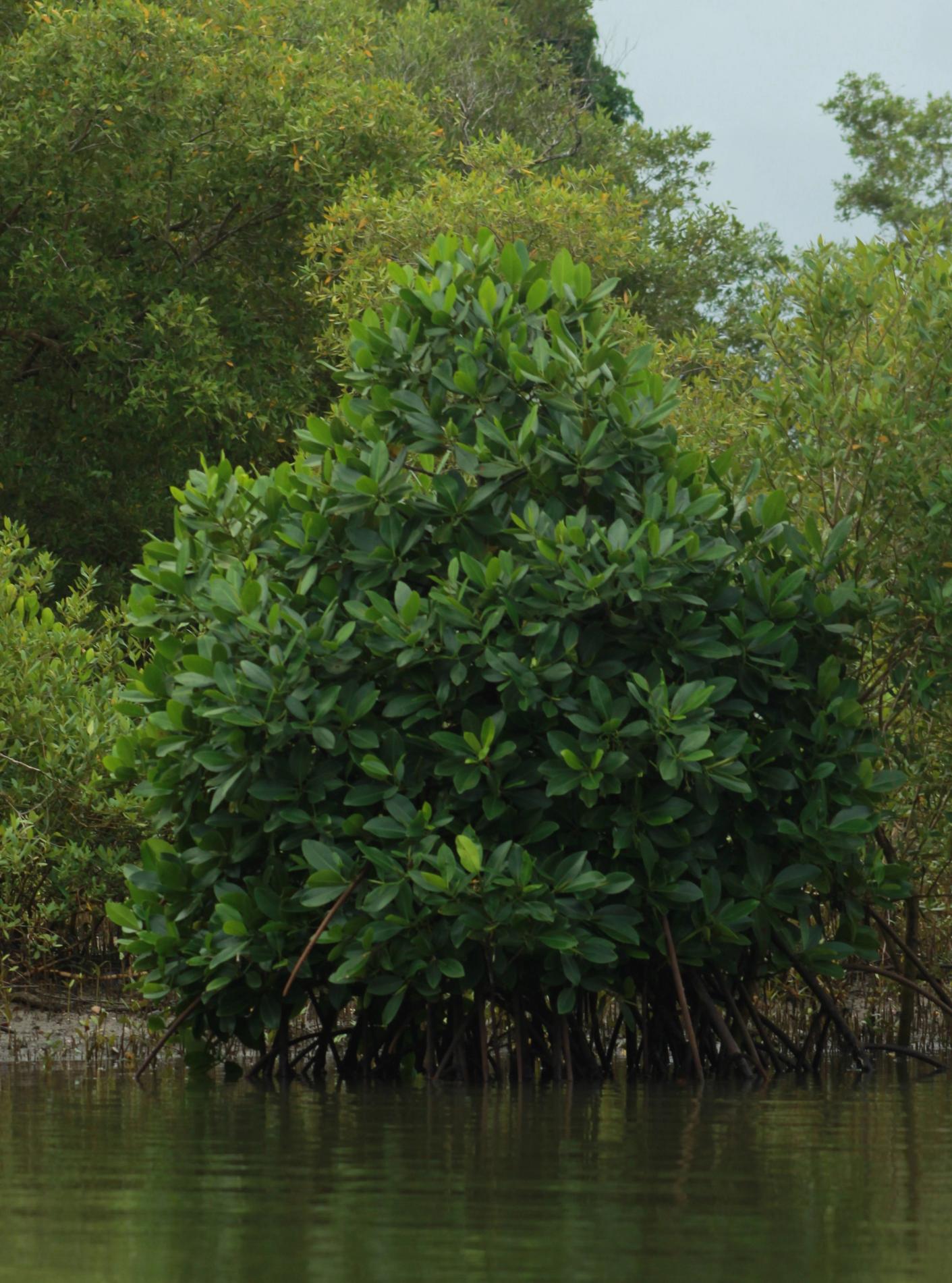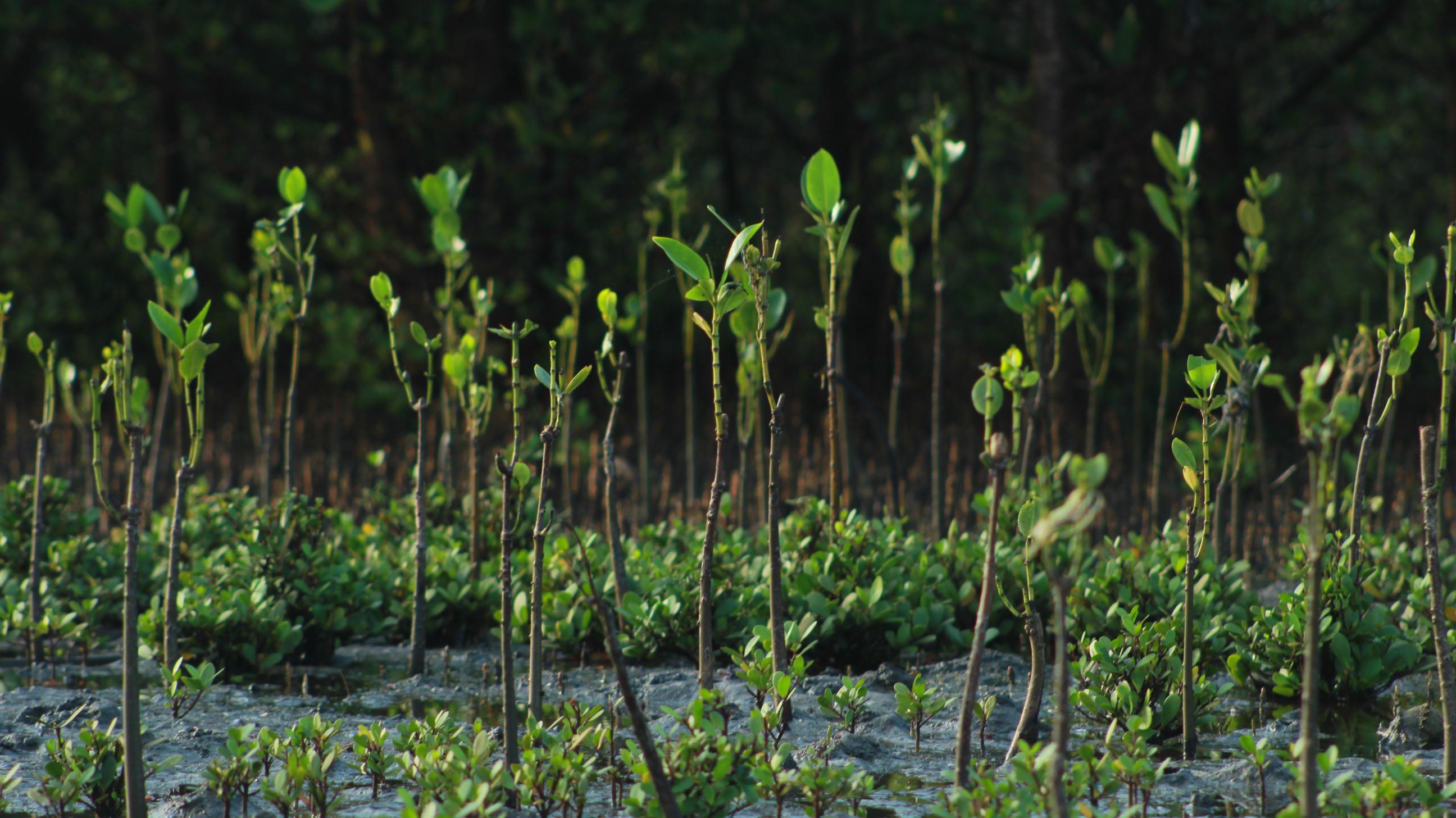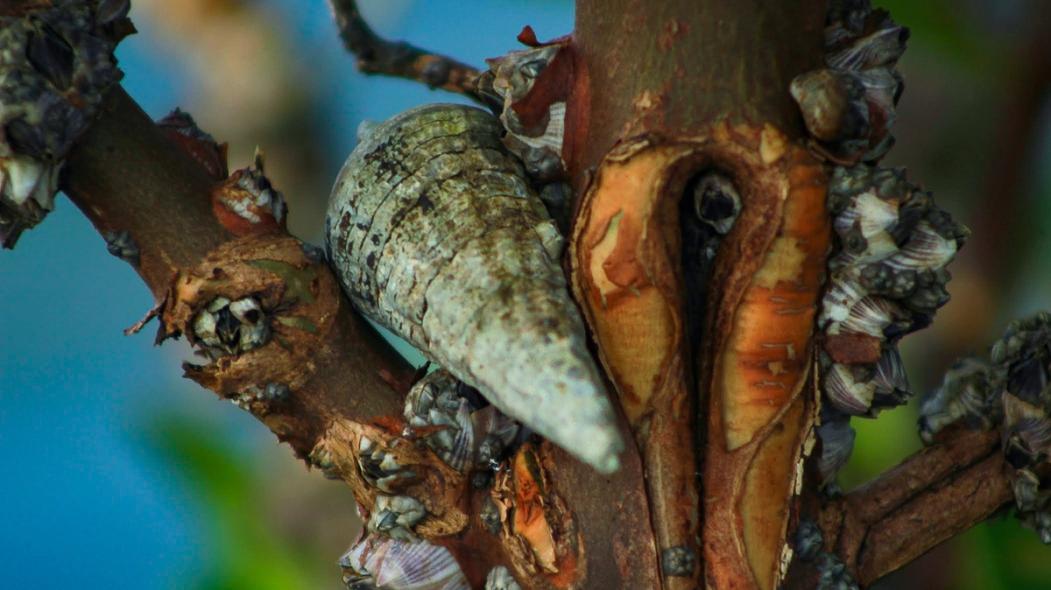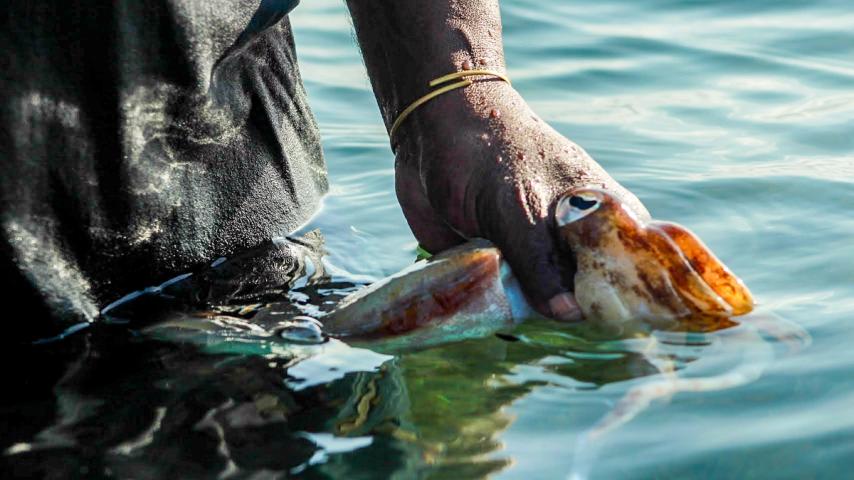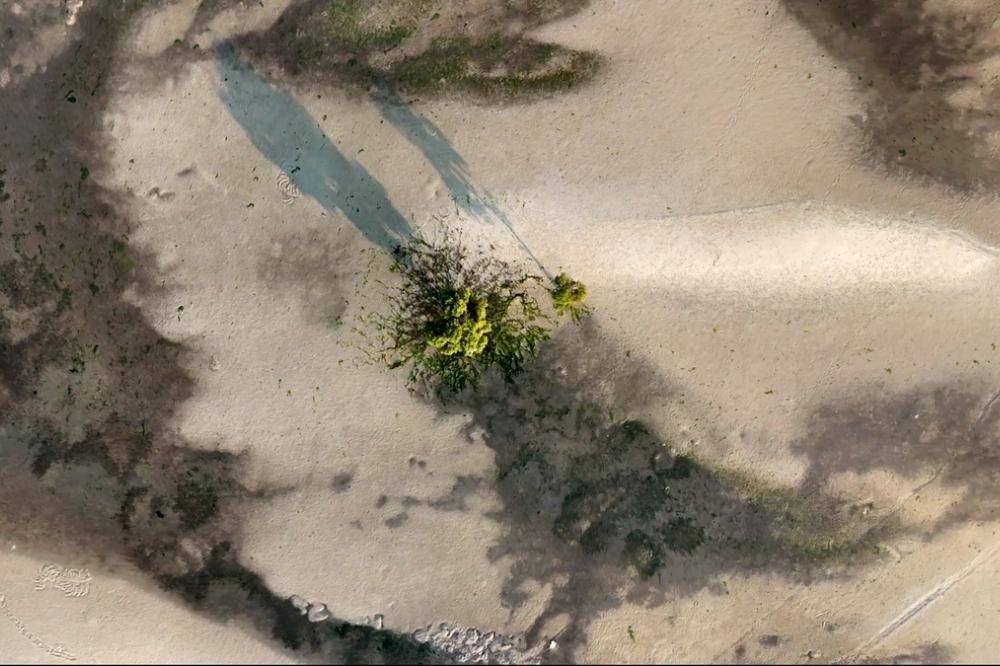Our evolving relationship with mangroves
Video: Danel Wentzel
My relationship with mangroves began unguided. During my final year as an undergraduate, one of our assignments was to conceive a mini research project and write a mini thesis on the results. I recall our group of four choosing to investigate which marine snails, crabs, and invertebrates made their homes along the trunks of mangrove trees in the Umlalazi estuary in northern KwaZulu-Natal, South Africa.
Bags packed for the weekend, I joined the rest of our class on a field trip to collect data for our projects. With detective hats guised as sunhats and starch-white lab coats slung over our eager shoulders, we stepped into the field with purpose. Knees deep in rich black mud, we stretched out our arms, measuring tape clasped at each end, to identify mangrove tree species and the creatures inhabiting their ecosystem. Banter filled the air as we convinced ourselves that this work was novel, ground breaking even. At that moment, I was unaware that mangroves would become a constant in my research career.
Learning about mangroves is also learning about their intricate connection to climate change. Globally, news reports often play out like a sad ballad, with concerned news anchors narrating over startling visuals of disasters—coastlines barren, ravaged, and scarred by floods, droughts, or other natural disasters. Viewers, distanced from the actual experience, take in the grim notes before switching to the next viewing experience, seeking something sweeter. Yet, the link between mangrove destruction and climate change often goes unnoticed. Why do mangroves matter in combating climate change, and when in history did their protection become a priority?
Die-off in no-man’s land
Time passed and I found myself standing in no man’s land—the ‘unclaimed’ space between Kenya and Tanzania’s borders where the Vanga community reside. The ocean stretched endlessly, with no skyscrapers or hotels in sight, only lush mangrove forests protecting the homes behind them. If the ocean ever raged, the mangroves would stand as the first line of defence. I thought about the mangroves back in South Africa and how many communities rely on these forests to shield them from storm surges and natural disasters too.
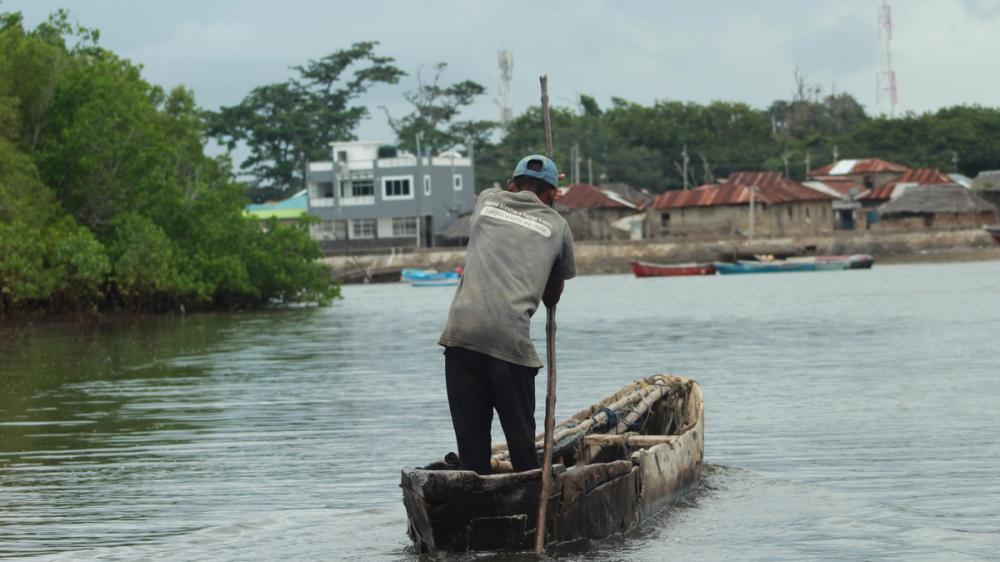
The lush mangrove in the no-man's land between Kenya and Tanzania are a first line of defence against the elements of the ocean for this Vanga fishing village. ©Jamila Janna
Mangroves typically grow well in tropical and subtropical coastal regions, which are warm and rain-rich. Unlike their terrestrial counterparts, mangrove forests thrive in salty water, breathing through aerial roots that rise above the water’s surface like tentacles reaching out of the earth to taste sweet oxygen. Mangroves have evolved mechanisms to excrete excess salt, sometimes even through a salt-crusted leaf. The leaves that fall to the soil, decompose slowly because of the water and the low oxygen levels. And so, they provide nourishment for the earth and water, in turn nourishing the mangroves and fauna associated with this ecosystem—while keeping the carbon trapped within them. This process of death feeding life, and life feeding life allows mangroves to store significant amounts of carbon in their bodies, in the soil, and in the diversity of life they support. This way, mangroves are able to sequester many times as much carbon as terrestrial forests.
As the grey, heavy clouds gathered above to watch us, we launched a drone to survey the mangroves in no-man’s land. From the shore, they appeared like tightly coiled Afro curls. As the drone moved towards the ocean, the lush green mangroves gave way to fragmented, brown, dying patches. It was unsettling to see such degradation in such a remote area. I have seen mangrove dieback in a rural area because of cattle grazing in an estuary. Those mangroves struggle to grow as the saplings are trampled daily by cattle. Here, there is no cattle, just ocean everywhere, and a small fishing community who was preparing to celebrate Eid the next day.
People and mangroves
For one thing, mangrove ecosystems have supported coastal communities dating as far back as the mid to late Holocene period (around 7,000 years ago). According to Freiss et (2019), early communities settled near mangroves to utilise their wood and harvest shellfish, as there is evidence of red mangrove (Rhizophora spp.) charcoal found in ancient shell middens—a type of historical landfill associated with villages.
As changes in the climate modified the landscape, particularly in regions like the Middle East, communities migrated closer to coastal areas, relying on mangroves and establishing trade routes for mangrove timber (Goldberg et al., 2020). Across oceans, in the Americas, mangrove wood became a sought-after commodity for shipbuilding, leading to overharvesting and a significant reduction in mangrove coverage. Meanwhile, mangroves continued being deforested for agricultural purposes. For most of the 1900s there is little data on the exact changes in mangrove cover. But we know that by the 1980s, the rate of deforestation had escalated to alarming levels, with an estimated 35% of the world’s mangroves lost during the 1980s and 1990s alone (Valiela et al., 2001).
Advances in remote sensing technology in the early 21st century revealed that global mangrove coverage amounted to approximately 137,600 sq. km. From 2000 to 2012, the rate of mangrove loss decreased significantly, dropping to between 0.66% (Sandilayan and Kathiresan, 2012) and 0.26% per year (Freiss et al., 2019). This progress can largely be attributed to enhanced protection measures and international policies aimed at restoring, rehabilitating, and preserving these precious ecosystems. Yet, while the pace of mangrove loss has slowed, the destruction has not ceased entirely.
As researchers paid more attention to the influence of declining mangroves on local ecosystems, they identified that the main drivers of mangrove loss in this modern era are aquaculture, agriculture, and urban development (Freiss et al., 2019). For example, Madagascar lost 35% of its mangroves between 1975 and 2005, while Southern China saw a 48% reduction due to rice production (Freiss et al., 2019). Aquaculture, particularly for fish and shellfish production, has led to widespread deforestation of mangroves. Besides clearing mangroves to set up the centres, the damage often extends to neighbouring, otherwise healthy, mangrove areas, due to changes in hydrology, pollution, and eutrophication.
Evolving relationships
The dead patch of mangrove trees in no-man’s land spurred on questions about factors driving their loss. Community leaders attributed the die-off to overdependence on mangroves trees for logging, unstainable use of resources, and destructive fishing practices. This sight served as a poignant reminder of a time when the community overexploited their resources. The tide has turned for them; a few years later, guided by researchers, some members of the Vanga community united to restore the mangrove forest, embodying the spirit of activism that mirrors current efforts across the globe.
Reflecting on my own evolving relationship with mangrove ecosystems, I recall that undergraduate field trip in Umlalazi. Then, my appreciation for mangroves correlated with whether I was to pass the project or not. But, in time learning more about them allowed me to appreciate these ecosystems. In Kenya, too, I am reminded that past mistakes require time and knowledge to learn from. Yet, the efforts unfolding across the globe hold significance. There is no waiting for a miracle to halt mangrove deforestation and mitigate the impacts of climate change, yet time becomes the thing we need but do not have enough of. While action may take different forms in various corners of the world, it remains action nonetheless, slowly transforming a sad ballad into something sweeter.
Share this story
- Ecosystems and habitats
- Ocean of hope
- People and the sea


